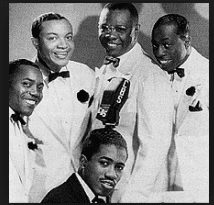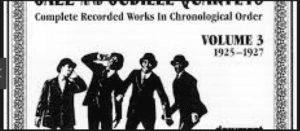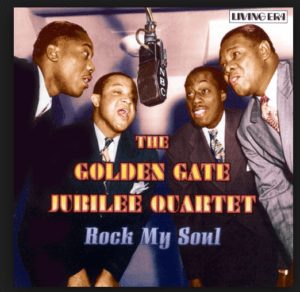
During the first half of the 20th century Jubilee quartets became prevalent within the African American culture. Jubilee quartets became popularized during the time of 1880-1929. The name Jubilee quartets was originated from the the Fisk Jubilee singers which was a choir organized by George L. White at Fisk University in 1871 to sing Negro spirituals. Negro spirituals was music that examined the disposition of slaves during the 1700-1800s. These negro spirituals are songs that gave the slaves hope that one day they would be liberated and the dehumanizing experiences would end. Thus, Jubilee quartets were popular African-American religious musical groups who helped birth negro spirituals and jubilee quartets music.
Jubilee quartets have many different characteristics which it entails. Jubilee quartets were composed of about 4-6 singers that had voice parts which consisted of Bass, Baritone, Tenor 2, and Tenor 1 (lowest to highest). During the time of Jubilee quartets, it was referred to as highly rhythmic. This meant that these quartets were focused on harmonies and ensemble sounds that were well put together. African-American quartets quickly caught attention, due to their musical styles; which incorporated blue notes, hocket, and melisma. Minstrel jubilee, community-based quartets, shape-note/ sacred harp, and gospel quartets are the different forms of quartets and they all expressed various styles of singing.


Some social implications that influenced Jubilee Quartets was that there were certain scenarios that they either could not be in or could not do all together. Often times when this Black music was displayed during this time, it was seen as political tools. One example is the usage of Black Jubilee Quartets when propaganda was expressed for Stalin during world war II. The music helped function as a tool either to grasp the attention of the audience, or as a method of entertainment. The commodities gained as a result of Jubilee Quartets was the idea that they were displayed in many radio broadcasts. The Jubilee Quartets became so well known and liked that the quartets began to tour and produce music that was heard on the radio. Jubilee Quartets primarily helped with the evolution of both sacred and secular music, while also participating in quartet competitions.
Some important performers were Fisk university Jubilee Quartet, Golden Gate Quartet (which was a quartet who sang in a club and sang “Gimme that Old Time Religion”), and the Mills Brothers sang “How I’m Doin, Hey, Hey” in 1934. Some other important performers were Sam Cooke, Dinwiddie Colored Quartet, Dixie Hummingbirds, Willie Dixon, Fairfield Four, Five Blind Boys, Georgia Minstrels, Golden Gate Quartet, Pilgrim Travelers, Soul Stirrers, Wheat Street Female Quartet, and Zion Harmonizers. As a result of these important performers, gospel started to evolve. There were many gospel groups evolving such as the Heavenly Gospel Singers and Golden Gate Gospel Train.

Overall, Jubilee Quartets paved the way for gospel music as well as choral music. Many times choruses sing in parts like soprano, alto, tenor, and bass or even divide into more parts as the music changes and parts are added. Jubilee Quartets were music created to coin harmonic sounds which, in turn, began to be broadcasted on radio stations and became a political tool. Jubilee Quartets opened doors for many different styles of music to evolve and was used as a platform for many other musicians and performers such as those in the 1960’s.

